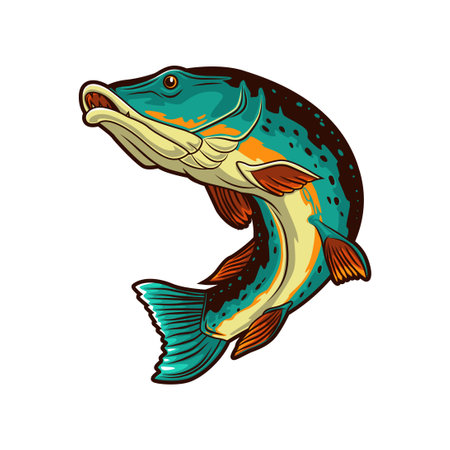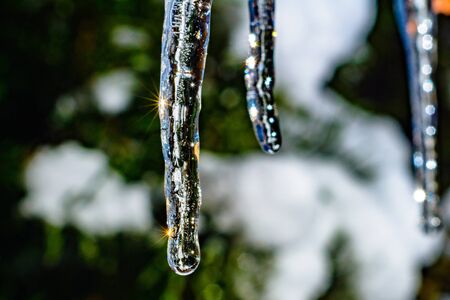Understanding Predator Behavior: What Drives Muskies and Pike to Strike
Muskies and northern pike are apex predators in freshwater ecosystems, and understanding what triggers their feeding behavior is key for any angler hoping to land one. Their behavior is influenced by a mix of biological instincts and environmental conditions. Let’s break down the major factors that determine when and why these fish decide to strike.
Water Temperature: A Critical Trigger
Both muskies and pike are cold-water species, but they each have preferred temperature ranges where they become more active and aggressive.
Optimal Feeding Temperatures
| Species | Preferred Feeding Temperature (°F) |
|---|---|
| Northern Pike | 55–65°F |
| Muskie | 60–70°F |
When water temperatures fall within these ranges, both species are more likely to feed actively. In colder or much warmer waters, their metabolism slows down, making them less responsive to bait or lures.
Light Conditions and Vision
Muskies and pike rely heavily on sight when hunting. That’s why light conditions can greatly impact their behavior.
Best Times Based on Light
- Low Light Periods: Dawn and dusk are prime times. The soft light makes it easier for these fish to ambush prey without being easily seen.
- Overcast Days: Cloudy weather can extend feeding windows throughout the day by maintaining lower light levels.
- Bright Sunlight: On sunny days, muskies and pike often retreat to shaded areas or deeper water where they feel more secure.
Prey Movement Patterns
The behavior of baitfish and other prey plays a huge role in triggering strikes from muskies and pike. These predators are opportunistic—they look for signs of weakness or irregular movement in prey.
What They’re Looking For:
- Darting or injured movements: Mimics an easy target.
- Baitfish schools breaking the surface: Indicates panic caused by a nearby predator, which can trigger a competitive feeding response.
- Lure action that imitates real prey: Erratic retrieves often work better than steady ones.
The Influence of Seasonal Changes
The time of year also affects feeding patterns. In spring, both species feed heavily after ice-out to recover energy. During summer, activity peaks during cooler periods like early morning or late evening. In fall, they bulk up for winter, becoming more aggressive feeders again. Understanding these seasonal rhythms helps anglers know not just where, but when to cast.
By paying attention to water temperature, light levels, and prey behavior, you can better predict when muskies and pike will be most active—and more likely to strike your lure.
2. Feeding Patterns Through the Seasons
Muskie and northern pike are apex predators with feeding habits that shift dramatically through the seasons. Understanding how their behavior changes with water temperature, daylight, and spawning cycles can help anglers know when and where to fish more effectively. Heres a breakdown of their seasonal feeding patterns.
Pre-Spawn Aggression (Late Winter to Early Spring)
As ice begins to thaw and water temperatures rise into the low 40s°F, both muskie and pike start preparing for the spawn. During this period, especially in pre-spawn, these fish become increasingly aggressive. They feed heavily to build up energy reserves for the upcoming spawning process.
Pike typically spawn earlier than muskie, often right after ice-out, while muskie wait until water temperatures reach around 50–60°F. This window before spawning is prime time for targeting both species with large, slow-moving baits near shallow flats and river mouths.
Key Pre-Spawn Feeding Zones:
| Species | Water Temp (°F) | Preferred Locations | Effective Baits |
|---|---|---|---|
| Northern Pike | 35–45 | Shallow bays, marshy inlets | Spoons, suspending jerkbaits |
| Muskie | 45–55 | Sandbars near drop-offs, creek mouths | Slow-rolled bucktails, soft plastics |
Summer Ambush Tactics (Late Spring to Mid-Summer)
Once spawning is complete and summer sets in, these predators switch to ambush tactics. Warmer water increases their metabolism, meaning they need to feed more often. However, during hot midday hours, both species tend to go deeper or hide in thick weed beds, waiting for prey to come close.
This is when understanding structure becomes key. Target them near submerged vegetation, rocky points, or along sharp drop-offs during early morning or late evening hours.
Summer Behavior Tips:
- Northern Pike: Often found lurking in cabbage weeds or under lily pads.
- Muskie: Prefer main lake points and deeper weed edges during mid-day heat.
- Use fast-moving lures like spinnerbaits or topwater plugs during active periods at dawn and dusk.
Fall Feeding Frenzy (Late Summer to Fall)
As days grow shorter and water temperatures begin to drop into the 50s°F again, muskie and pike enter one of their most aggressive feeding phases of the year. Theyre bulking up for winter and will chase down big meals with little hesitation.
This is the time to throw large profile baits—think oversized crankbaits or giant rubber swimbaits. Focus on transition zones where shallow flats meet deeper basins, as baitfish congregate there in cooler weather.
Top Fall Feeding Spots:
| Condition | Location | Bait Suggestion |
|---|---|---|
| Cooling Water Temps (50s°F) | Main lake basins with nearby weed edges | Large glide baits, trolling big crankbaits |
| Baitfish Migration | Mouths of creeks and rivers | Sucker imitations, live bait rigs (where legal) |
Pro Tip:
The fall bite can be short but explosive—monitor your local water temps closely and plan trips around cold fronts that trigger feeding sprees.
By learning how muskie and pike adjust their feeding behavior throughout the year, you’ll improve your odds of landing a trophy fish no matter the season.

3. Spawning Behavior and Its Impact on Angling Success
Understanding the spawning behavior of muskies and northern pike can make a big difference when planning your fishing trips. These fish follow predictable patterns during the spawn, and knowing when and where they reproduce can help you target them more effectively.
Timing of the Spawn
Muskies and pike both spawn in early spring, but their exact timing depends on water temperatures. Pike typically spawn earlier than muskies.
| Species | Typical Spawning Temperature (°F) | Spawning Period |
|---|---|---|
| Northern Pike | 40–50°F | Late March to Early April (varies by region) |
| Muskellunge (Muskie) | 50–60°F | Mid-April to May (varies by region) |
Where They Spawn
Both species seek out shallow, weedy areas with soft bottoms for spawning. These spots provide protection for eggs and are usually found in bays, marshes, or slow-moving backwaters. Pike often spawn in flooded vegetation near shorelines, while muskies may travel farther into shallow flats or tributaries to find ideal conditions.
How Spawning Affects Fishing
The spawning season is a tricky time for anglers. During active spawning, both pike and muskie tend to ignore lures because their focus is on reproduction rather than feeding. However, just before and after spawning—known as the pre-spawn and post-spawn periods—fishing can be excellent.
Pre-Spawn Phase
As water temperatures start to rise but before fish begin spawning, they feed aggressively to build energy. This makes it a prime time to catch large females that are full of eggs and actively hunting.
Post-Spawn Phase
After laying eggs, female muskies and pike often rest for a few days, but then return to feeding as they recover. This post-spawn recovery period is another great window for anglers looking to hook a trophy fish.
Pro Tip:
If youre targeting these species during spring, focus your efforts on warming shallow areas with emerging vegetation. Use slower-moving lures like suspending jerkbaits or soft plastics that mimic injured prey—these can trigger strikes from lethargic fish during pre- and post-spawn phases.
4. Prime Habitat: Where Trophy Fish Like to Lurk
Understanding where muskies and pike like to hang out is key to landing a big one. These apex predators aren’t just roaming around aimlessly—they’re smart, and their location often depends on things like food availability, water temperature, and time of year. Let’s break down the types of habitats these fish prefer and how those preferences shift with the seasons and weather.
Top Habitats for Muskie and Pike
Both muskie and northern pike favor specific environments that offer good cover and access to prey. Here are some go-to spots anglers should target:
| Habitat Type | Description | Why They Like It |
|---|---|---|
| Weed Beds | Areas with aquatic vegetation like cabbage, coontail, or milfoil. | Provides cover for ambushing prey; oxygen-rich environment. |
| Drop-Offs | Sudden changes in depth along underwater ledges or slopes. | Access to both deep and shallow water; ideal for temperature regulation. |
| River Inlets/Outflows | Where rivers or streams flow into or out of lakes. | Brings in fresh oxygenated water and baitfish. |
| Rocky Points | Jutting landmasses with rocky structure under the surface. | Great ambush points; attracts baitfish due to structure and warmth. |
Seasonal Shifts in Habitat Preference
Muskie and pike don’t stay in one spot all year round. Their preferred habitat changes depending on water temperature, spawning cycles, and feeding patterns. Heres a quick breakdown:
| Season | Preferred Habitat | Key Behavior |
|---|---|---|
| Spring | Shallow bays, river mouths, warm flats | Spawning season; seek warmer waters near shoreline vegetation. |
| Summer | Weed edges, drop-offs, mid-lake humps | Feeding aggressively; follow schools of baitfish into deeper zones. |
| Fall | Rocky points, steep breaks, main lake structures | Binge feeding before winter; targeting bigger prey items. |
| Winter (Ice Fishing) | Sheltered bays, slow-moving backwaters | Pike remain active; muskie tend to be less aggressive but can still be caught. |
Weather Impacts on Habitat Use
The weather plays a big role in where these fish will be. On bright sunny days, they might move deeper or stay tight to cover like thick weed beds or under docks. Cloudy skies can trigger more open-water movement as visibility drops and muskies feel safer moving around. Storm fronts—especially just before a storm hits—can cause a flurry of activity as pressure changes encourage feeding behavior.
Quick Tip:
If you see a storm front coming in or a sudden change in wind direction, hit your best spots fast—those windows of opportunity don’t last long!
Muskie and pike aren’t just random wanderers—they’re calculated hunters that use their environment to their advantage. By understanding their favorite habitats and how those change throughout the year, you’ll boost your chances of hooking into that elusive trophy fish.
5. Human Influence and Conservation Challenges
Muskie and pike are top predators in freshwater ecosystems, but they’re not immune to human influence. Over the years, fishing pressure, habitat loss, and environmental changes have all played a role in shaping their populations. Let’s break down how these factors affect these iconic fish and what’s being done to protect them.
Fishing Pressure
Both muskie and pike are highly sought after by anglers due to their size and aggressive nature. However, overfishing—especially during spawning season or in smaller lakes—can reduce population numbers and disrupt natural age structures. Catch-and-release practices are common among muskie anglers, but improper handling can still lead to high mortality rates.
Best Practices for Catch-and-Release
| Practice | Why It Matters |
|---|---|
| Use barbless hooks | Reduces injury and makes release easier |
| Keep fish in water during unhooking | Minimizes stress and oxygen loss |
| Handle with wet hands or gloves | Protects the fishs slime coat from damage |
| Limit air exposure to under 10 seconds | Improves survival rates significantly |
Habitat Loss and Degradation
Muskie and pike need healthy aquatic habitats to thrive. Shoreline development, dam construction, pollution, and invasive plant species can all degrade the quality of their environment. Spawning beds can be destroyed by siltation or altered water levels, leading to lower reproduction success.
Environmental Changes
Climate change is warming water temperatures and altering seasonal patterns. Both species prefer cooler water, especially during the summer months. Rising temperatures can push them out of their preferred zones or increase competition with other species like bass or carp.
Conservation Efforts
State agencies, conservation groups, and local anglers are working together to support muskie and pike populations through:
- Stocking programs: Releasing hatchery-raised fish into suitable waters.
- Habitat restoration: Replanting aquatic vegetation and improving shoreline buffers.
- Regulation enforcement: Size limits, slot limits, and closed seasons to protect spawning fish.
- Education: Teaching anglers about proper handling techniques and ethical fishing practices.
The Role of Anglers in Conservation
You don’t have to be a biologist to make a difference. By following regulations, sharing best practices, and supporting local conservation projects, every angler plays a part in keeping our waters healthy for future generations of muskie and pike.


